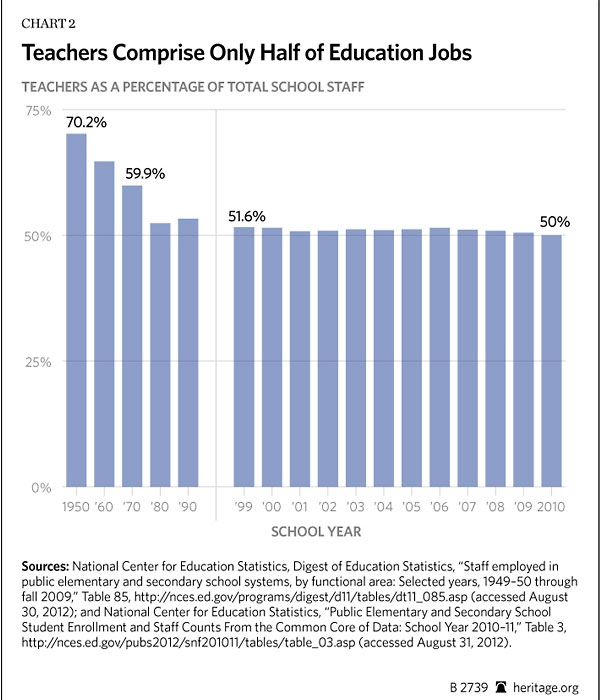The U.S. public education system has seen an enormous increase in staff over the past few decades. But unlike private companies, which base staffing decisions on product demand, the number of school staff positions has increased rapidly without a commensurate increase in the number of students served by the system.
A new report by the Friedman Foundation for Educational Choice highlights just how bad the school staffing surge has become:
Public schools grew staffing at a rate four times faster than the increase in students [from 1950 to 2009]. Of those personnel, teachers’ numbers increased 252 percent, while administrators and other non-teaching staff experienced growth of 702 percent, more than seven times the increase in students.
The Friedman report points out that there are 21 “top-heavy states” that employ more non-teaching personnel in the school system than teaching personnel. Benjamin Scafidi, the report’s author, writes that “Virginia ‘leads the way’ with 60,737 more administrators and other non-teaching staff than teachers in its public schools.” In another example, the report points out that the state of Maine experienced an 11 percent decline in students from 1992 to 2009, yet it increased the number of administrators and other non-teaching personnel in its public schools by 76 percent.
That’s the type of staffing surge that, if reversed, could save some $24 billion annually, Friedman estimates.
The Friedman Foundation’s research mirrors Heritage findings on the dramatic increases in education staff over the decades. Since 2000, the percentage of teachers as a portion of school staff has decreased by nearly 3 percent; since 1970, that percentage has declined by 16.5 percent. Notably, the percentage of teachers as a portion of school staff has decreased more than 28 percent since 1950. Today, teachers comprise just half of all education jobs.
Not surprisingly, academic achievement and graduation rates have shown little to no improvement over the same time period.
States should consider cutting costs in areas that are long overdue for reform and should refrain from continuing to increase the number of non-teaching staff in public schools. As the Friedman report concludes: “The policy of increasing public school staffing does not appear to improve student achievement—despite its massive and on-going cost to taxpayers.”






























